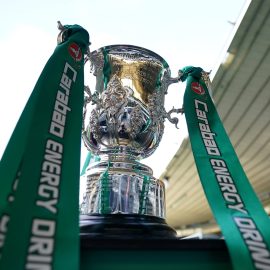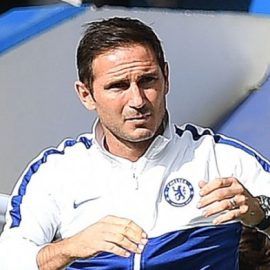Fashion writers like to think that they have their fingers on the ever-changing pulse of the British nation, that they are armed with an intricate understanding and perception of what is hot, not, and what could well turn out to be in the future. And listening to most seasoned observers of said industry, it is fair to say that one trend tends to be permanently listed under the “In” banner. Retro.
Retro is one of these words that gets used more and more frequently, and people don’t generally have a marvellous grasp of what it means. I won’t go particularly into detail with regards to language, its intricacies, nuances and so forth, but suffice to say that “retro” can apply to pretty much anything these days. From old-style polo shirts (buttoned right up to the top for some reason), to hi-top trainers, via chequered shirts, baseball caps on sideways, long and best forgotten 80s bands, TV shows and phases, everyone loves a bit of retro, yeah? As Spandau Ballet would say, albeit in an annoyingly toned-voice, “truuuueee”.
But not all retro is good, not all retro is acceptable. Some things from back in the day are best left there.
Whilst it is important to avoid the hysterical over-reaction and self-righteous pouting preferred by most publications in the face of scenes such as the ones witnessed in and around Upton Park on Tuesday night, there is a general sense that football as a sport, as a business, and as a sociological heavyweight, has a duty to ensure that any sniff of a return to days far darker and more sinister among football supporters is snuffed out as close to source as possible.
West Ham & Millwall, according to renowned (and distressingly, revered) former Hammers football hooligan-cum-writer Cass Pennant, was always going to be a powderkeg atmosphere. The first meeting between the sides for four years, an evening kick-off, cup-tie scenario, balmy summer night, frustrated fans spending days in work and early evenings on trains and buses, it is a dangerous recipe for an East London versus South London showdown.
And so it proved. West Ham and its supporters have been forced to shield themselves from a blanket of abuse and criticism from pretty much all quarters following the scenes before and during Tuesday’s League Cup tie, much has been written, even more has been said. A glance at 606’s message board early on Wednesday morning told its own story; fans from across the country were nipping into Claret & Blue corner for their say on what some papers described as simply “The Latest Episode” for this club “hanging its head in shame”.
Millwall didn’t escape the sharp end of the dart either of course. They were never going to. A club with a reputation such as theirs will never be deemed completely innocent in a situation such as this, and subsequent reports of racist chanting aimed by elements of both sets of supporters towards black players has ensured that at least two areas of London were covered in whatever the opposite of glory is this week.
But contained in that description is an important word. Elements. It may be true that a sufficient number of Hammers/Lions were intent on causing trouble at the Boleyn Ground on Tuesday, and managed to do so in a pretty public and disappointing manner. But the way in which football, and its supporter, has been labelled since is hugely unfair. Sport tends to have that facet to it, whereby a minority (and Tuesday night’s troublemakers WERE a minority- the gate for the game was just under 24,500, the fans causing trouble were a fraction of this) can spoil both a games’ enjoyment and its reputation in one fell swoop.
And whilst Tuesday night showed that mob mentality still exists, even at the highest level of English football, and can still pose plenty of problems for a game which has taken giant leaps to improve crowd control and safety since reaching a terrifying nadir in the “retro” 1980s, when riots were as much a part of football as mullets, and twice as frightening.
Since then, we have seen football-related arrests in England’s top four divisions fall from more than 6000 in 1988-89, to just over 3000 in 2007-08, and this despite a rise in attendances both average and total. As David Conn points out in his excellent blog on the Guardian, in that 2007-08 season over 40% of matches were held minus a police presence.
So, time to panic? Are the statistics misleading? After all, Sunderland supporters stand accused of fighting with police at a train station in Newcastle- en route to a pre-arranged battle with rival Magpies fans according to police intelligence- following a pre-season game with Hearts. The supporters have hit back with accusations of their own levelled at police heavy-handedness, which have garnered little publicity at all.
Does the national media overlook a problem with regards to hooliganism in favour of portraying a happy, carnivalistic atmosphere for the National Game? Are modern crowd control methods at football matches so good that they simply drive troublemakers further away from stadiums, therefore deeming their antics to be “non-football-related”? Does the ongoing fascination with “hoolie” literature and films- the film Green Street with Elijah Wood deals with the West Ham/Millwall confrontation specifically for example- ensure that such thoughts are never far from a trouble-maker’s mind?
All are interesting questions, all will probably never be fully answered, in the meantime the facts tell their own story. Tuesday’s was an incident, or series of, which surprised (if not shocked) the country and its football following. The reason for this, in my eyes, is because such an event is rare. Hopefully the Football Authorities have measures in place to ensure that it is kept rare, and that retro terrace culture stays where it belongs, either in the past, or in monotonous Nick Love films with Danny Dyer and his cronies.
Add Sportslens to your Google News Feed!






